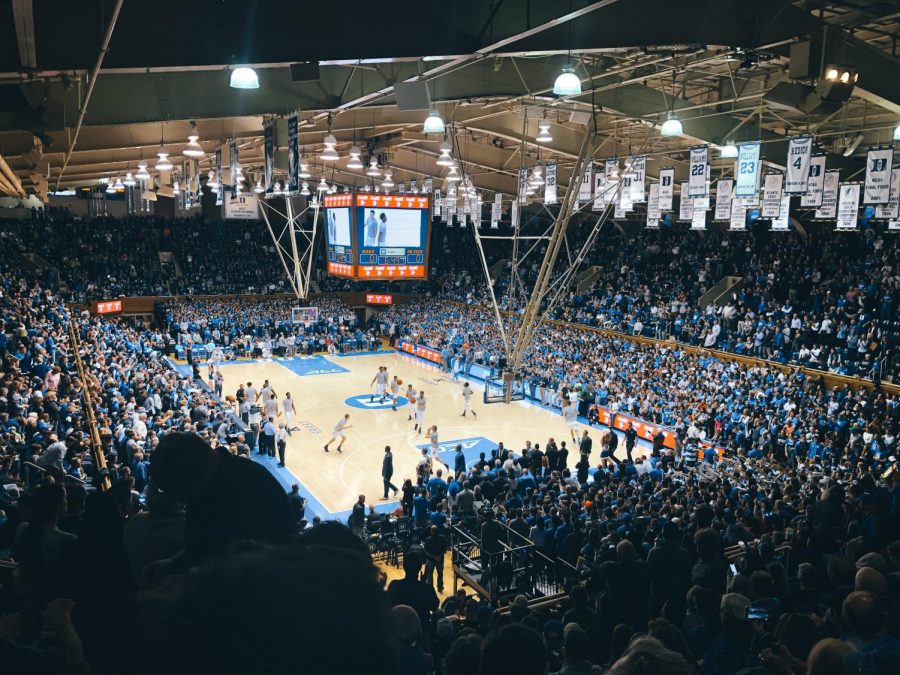Pay student-athletes? It’s not that simple.
The question of paying student-athletes has been a hot topic since the Fair Pay to Play Act was passed
March 3, 2020
When the Fair Pay to Play Act was passed in California last September, it was a small yet monumental step in minimizing the massive gap between the billion-dollar NCAA and its unpaid athletes.
The Act ruled that student-athletes in California can profit off the use of their names, images and likenesses, as well as allow them to hire agents or representatives to aid them in acquiring commercial opportunities. Many states have followed California’s lead by passing acts of their own, and soon after, the NCAA unanimously voted to adopt the law across all three divisions.
This means that we could soon be seeing college athletes in Nike commercials and the return of the EA Sports NCAA video games.
The discussion regarding compensation for student-athletes was revived in 2014 when former UCLA basketball player Ed O’Bannon won a class-action lawsuit against the NCAA for the organization’s use of the images of its current and former athletes for commercial purposes. Video games depicting NCAA athletes were discontinued, but compensation was still restricted. The debate has raged on ever since.
Current NBA player and former standout Michigan State University athlete Draymond Green is one of many professional athletes who has been outspoken about the subject. Green has referred to the NCAA as a “dictatorship,” and others have even compared the relationship between student-athletes and the NCAA to “slave labor.”
Although the rule change has nothing to do with allowing schools to physically pay their players, some legislators and other powerful voices have reasoned that it may be the next step. With the NCAA reaching $1 billion in revenue and coaches receiving million-dollar contracts every year, all off the backs of the players, it’s hard to disagree.
New York Sen. Kevin Parker proposed a bill that would “require college athletic departments to give a 15 percent share of annual revenue to student-athletes,” according to ESPN. The revenue would be split equally among all student-athletes in all sports at each school.
As good as that may sound, instituting that kind of system is a whole different ball game. Making student-athletes paid employees brings up several issues. (The argument is usually narrowed down to paying Division I athletes only, so let’s assume that’s the case here.)
First, many schools would struggle to pay their athletes. Take Portland State and Duke as examples, both of which are Division I schools. The entirety of Portland State’s men’s sports programs pulls in around $5 million per year, which approximately equates to how much is spent on those programs, therefore bringing in little to no profit to the school. Meanwhile, Duke’s men’s basketball team, which is televised on ESPN on a weekly basis, brings in over $30 million in revenue (and profit) each season on its own.
Forcing both programs to pay all of their student-athletes a 15 percent share of the revenue might have a minor impact on Duke athletics, but Portland State would likely have to cut several of its sports programs to make it feasible.
Next, you have the question of equal pay. Should former Duke superstar Zion Williamson have made the same amount of money as someone on the tennis team? That seems unfair, since Williamson certainly brought more money to Duke’s athletics than anyone else. But at the same time, how else would you determine who makes what? Arguments about pay inequality would just complicate this debate further.
Additionally, if one school’s athletic program makes more money than another’s, and therefore pays its student-athletes more, then it would give them significant recruiting advantages. And thanks to the financial dominance of men’s college football, you would also encounter the question of differentiating between men’s and women’s programs.
Finally, the NCAA has clinged onto “amateurism” as to why it restricts student athletes from receiving pay. Former NCAA executive Oliver Luck said, “[Paying college athletes] would distract in a very significant way from what they really need to pursue – an education.”
While I don’t doubt the bad faith and self-interest in Luck’s comments, I think it’s fair to question how paying student-athletes would change the shape of academics at colleges and universities. Would receiving paychecks give them less incentive to go to class and achieve good grades? It’s hard to say exactly what the effects would be.
There is no doubt in my mind that some form of compensation is overdue for student-athletes. And as a student-athlete myself (although I won’t claim to know the life of a Division I football or basketball player), I empathize with concerns that NCAA executives and coaches can become millionaires while a player can be suspended for simply borrowing money to move.
To put it simply: there is no easy answer here, and I have only scratched the surface of this debate. The passing of the Fair Pay to Play act was a step in the right direction in overthrowing the corruption of the NCAA. But until someone develops a sound plan to pay student-athletes, I think we should focus on funneling the money towards scholarships, food vouchers, academics and giving student-athletes a safe and healthy environment.

